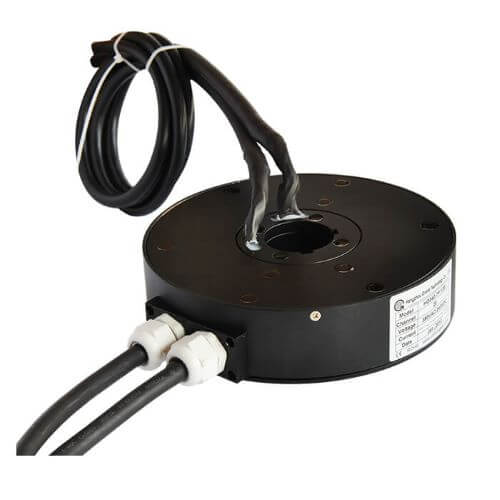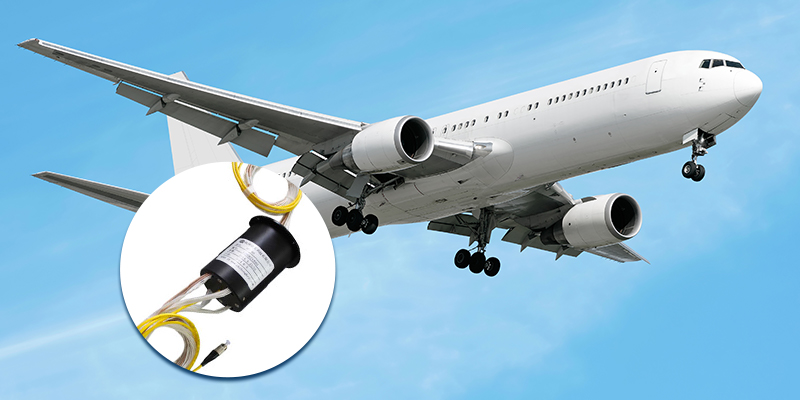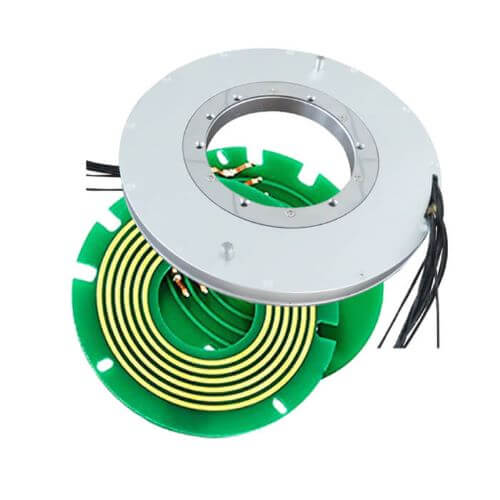This article seeks to provide an in-depth look at the crucial electromechanical component, the disc slip ring. It will furnish information on disc slip rings, from their definition to their functional design, numerous types, and diverse applications across industries. Further, it will also delve into key parameters to consider when selecting disc slip rings and their pros and cons. Additionally, it will cover maintenance procedures, troubleshooting tips, and a glance at the leading manufacturers. The aim is to offer readers a thorough understanding of disc slip rings, their significance, and their range of use, whether you’re an industry professional, student, or simply fascinated by technology.
Introduction to Disc Slip Rings
Slip rings, a vital component in any electromechanical system, serve as the bridge for transmitting power and electrical signals from a stationary to a rotating structure. Essentially, they enable smooth, unrestrained, and continuous rotation while preventing wire tangling. Imagine a merry-go-round, spinning freely while the ‘horses’ move up and down, the lights flicker, and music plays. This functionality is made possible by the clever employment of slip rings.
In the vast family of slip rings, disc slip rings sit as a prominent member — compact yet powerful. Shaped much like a round, flat disc — hence the name — these specialized components consist of concentric rings aligned on a flat surface, separated by insulation. Conductive brushes slide across these rings, maintaining connectivity as the disc turns.
The pertinence of disc slip rings spans across several diverse industries, underscoring their salient role in modern machinery. Whether it’s maintaining seamless communication in aerospace equipment, ensuring smooth operations in wind turbines, facilitating advanced diagnostics in medical imaging, or conducting precise movements in robotics, disc slip rings find themselves at the heart of these complex operations. They offer a solution to the age-old mechanical issue of maintaining electrical connection during continuous 360-degree rotation — a demand now common in a myriad of industrial applications.
Moreover, disc slip rings have contributed significantly to industrial advancement by enabling rotary systems’ miniaturization. Their flat and compact design makes them an excellent choice for applications where space and weight constraints are of prime importance, like drones or handheld imaging devices. From automation to medical, and telecommunications to defense sectors, the disc slip rings have proven to be an indispensable invention.
As we delve into the world of disc slip rings, it’s crucial to understand their design elements, the aspects that influence their performance, their varying types catered to specific applications, and their maintenance aspects for prolonged service life. Furthermore, comparing their benefits and potential limitations can offer substantial insights into the selection process, meeting one’s precise requirements. With an overwhelming presence in a range of industries, a thorough appreciation for disc slip rings would reflect the inherent sophistication in our everyday types of machinery, from a simple electric fan to a complex satellite system.

Disc Slip Ring Design
At the heart of a disc slip ring, the design wisdom that forms this marvel of electromechanical engineering creates bridges between static and rotating systems seamlessly. Disc slip rings are intricate compositions of several parts, with design decisions significantly influencing their performance.
The primary components of the disc slip ring are a central hub or core, a series of concentric copper or gold alloy rings that lie flat on the core’s plane, and conductive brushes, usually made of precious metals or graphite. As the disc rotates, the brushes, held against the disc’s surface by springs, slide over the rings permitting an electrical connection without hindering the rotation.
Every aspect of the design serves a mission, giving these inventively simple devices the capabilities they boast today. Let’s delve into three of the most impactful design aspects: the number of channels, material selection, and dimensions.
- Number of channels: Each ring on the disc corresponds to a channel for communication or power transfer. Depending on the complexity and requirements of the rotary system, disc slip rings can be designed to have any number of channels. The higher the number of channels, the greater the multifunction capability, but the larger the overall size.
- Material selection: The materials chosen for the rings and the brushes are mostly conductive metals with varying degrees of hardness, depending on the application’s requirements. Gold is often preferred for its excellent conductivity and corrosion resistance, while copper or brass might be chosen for high-power applications. Graphite brushes offer longevity and low friction but may compromise on electrical performance compared to metal brushes.
- Dimensions and sizes: The dimensions of a disc slip ring largely depend on the number of rings (or channels) integrated into the design and the space limitations of the system where it will be installed. In miniature systems like drones, the slip rings might be just a few millimeters in diameter. On the other end of the spectrum, for major industrial machinery or wind turbines, slip rings may expand up to several feet across.
Each of these design aspects must be meticulously considered and balanced to ensure the disc slip ring functions flawlessly in its relevant application, proving once again that even in the simplest mechanisms, profound engineering thought prevails.
Types of Disc Slip Rings
Just as one size doesn’t fit all, one type of disc slip ring cannot cater to the diverse array of applications seen across numerous industries. They are fine-tuned to fulfill diverse needs, which has led to the emergence of different types, each bringing unique advantages to the table.
- Capsule Disc Slip Rings: These are the most common types of disc slip rings. Compact, lightweight, and available with a range of diameters and channel numbers, capsule disc slip rings offer superb performance in small-scale applications. They are used in various devices like CCTVs, lab equipment, robotics, and even small wind turbines. Their capsule-like form factor helps to protect the slip ring assembly, thereby improving longevity.
- Pancake Slip Rings: As their name suggests, pancake slip rings have a flat, round shape resembling a pancake. This design allows for a larger diameter and ultimately, more channels within a compact vertical space. The relatively larger surface area offers better heat dissipation, which can be crucial when used in high-speed or high-power applications. Their applications frequently include packaging machinery, cable reels, and rotating displays.
- Platter Slip Rings: Platter slip rings come with an even larger diameter compared to pancake slip rings, offering numerous channels and higher current capacities. They are often custom-designed for specific applications. Platter slip rings typically find their use in heavy machinery, like large wind turbines.
- Customized Solutions: The needs of certain industries or applications might differ vastly from standard requirements. This is where customized slip rings come in. They can be designed with specific materials, housing, and performance parameters to align perfectly with the application’s requirements. For instance, in the aerospace industry, disc slip rings might be customized with weight and space-saving considerations while ensuring they can withstand extreme operating conditions.
In essence, understanding the unique features and disadvantages of each type of disc slip ring is crucial. This knowledge allows one to choose the right type for any given application, thereby ensuring optimal performance and durability.

Applications of Disc Slip Rings
Disc slip rings, these seemingly simple devices, sit at the nucleus of many advanced applications across diverse industries. Their capability to facilitate unrestricted 360-degree rotation while maintaining electrical connectivity makes them invaluable in numerous fields.
- Industrial Machinery and Automation: Industrial machines often require parts to rotate continuously, while simultaneously transmitting power or signals. Everything from printing machines, bottling plants, and packaging lines, to amusement park rides, heavily rely on disc slip rings for their smooth functioning. Automation in these fields to improve efficiency and quality is contingent on these components.
- Robotics: As a field that demands precise movements paired with continuous data transfer, robotics represents an ideal arena for disc slip rings. They ensure seamless communication between the different parts of the robot, making autonomous movements and tasks possible. They might serve in robotic arms in assembly lines or sophisticated surgical robots in operating rooms.
- Wind Turbines: Harnessing wind energy fundamentally requires continuous rotation, making disc slip rings a windswept choice for this renewable energy technology. In wind turbines, they manage power and data communication between the stationary nacelle and the rotating turbine blades, a role that’s critical for the system’s overall output and efficiency.
- Medical Equipment: Disc slip rings play a vital role in medical imaging devices like CT scanners and MRI machines. They help send patient data from the rotating gantry to the stationary computer system, enabling the formation of clear, comprehensive images. Their compact size, high performance, and reliability make them a great fit within the precision-driven domain of healthcare technologies.
- Aerospace and Defense: In satellites, spacecraft, radar antennas, and other defense or aerospace equipment, disc slip rings transmit power and data while allowing these systems to rotate unhindered. Their customization capabilities for extreme conditions, space constraints, weight limitations, and high data integrity requirements mark them as an ideal choice in this high-tech industry.

The breadth of disc slip ring applications underscores their ubiquity and criticality in modern industrial technology. Regardless of industry, if there’s machinery that requires smooth, unrestricted rotational motion alongside data or power transmission, disc slip rings are likely to have a say in making it possible.
Key Parameters for Selecting a Disc Slip Ring
Selecting the right disc slip ring for a specific application can be complex, as multiple factors come into play. Finding the perfect balance to ensure an efficient and reliable system is vital. Here, we discuss five key parameters that demand thoughtful consideration when selecting a disc slip ring:
- Current and Voltage Requirements: The electrical demands of the application lay the foundation for slip ring selection. Disc slip rings must cater to the specific voltage and current requirements of the system to ensure power or signal transmission without performance degradation. Mismatched requirements can lead to power loss, overheating, or premature wear and tear.
- Speed of Rotation: The rotational speed of the system has a direct bearing on the performance and lifespan of a disc slip ring. Higher rotational speeds create greater friction and can cause faster wear and degradation of the brushes and rings. Slip rings must be designed to cope with the intended rotational speed, which may involve material selection adjustments or special lubricants to reduce friction and wear.
- Operating Temperature: Every disc slip ring comes with a designated operating temperature range. Knowing the temperature conditions in which the application functions is critical for choosing the right slip ring. Operating outside their specified temperature range might lead to material deformations, compromised electrical conductivity, or failure in extreme cases.
- Environment (Humidity, Dust, etc.): Environmental factors such as humidity, dust, or corrosive substances might affect the long-term performance of disc slip rings. Depending on the operating context, consider selecting a slip ring with an appropriate ingress protection (IP) rating, sturdy housing, or corrosion-resistant materials.
- Installation Space and Size Constraints: Slip rings should align with available installation space, making it imperative to consider the dimensions and size constraints of the application. While smaller slip rings might be ideal for drones or medical devices, large-scale machinery or wind turbines might necessitate bigger, heavy-duty discs.
Keeping these parameters in mind ensures that the chosen disc slip ring delivers the desired performance level and longevity. Apart from these key aspects, other factors like noise, vibration, shock loads, or even budget may also influence the selection process, tailoring the slip ring to meet the specific requirements of a given application.
Advantages and Disadvantages of Disc Slip Rings
As vital electromechanical devices, disc slip rings come with specific advantages and disadvantages. Analyzing their strengths and limitations helps highlight their applicability in various industries and applications.
Pros:
- Compact Design: Disc slip rings possess an inherently compact form, making them suitable for applications where space constraints are a concern. Their design allows for easy integration into numerous devices without increasing the size or weight significantly.
- Flexibility in Installation: Disc slip rings can be installed in both vertical and horizontal orientations, depending on the application or engineering constraints. This versatility simplifies the installation process and accommodates various installation requirements.
- High-Speed Performance: Disc slip rings can maintain stable electrical performance even at high rotational speeds. By selecting suitable materials, they can efficiently handle high-speed rotations without compromising their longevity or reliability.
- Low Electrical Noise: A key benefit of disc slip rings is their ability to transmit signals without significant electrical noise. This makes them ideal for applications where signal integrity is vital, like in medical or aerospace equipment.
Cons:
- Limited Number of Channels: While disc slip rings can incorporate multiple channels for power and signal transmission, there is an upper limit on the number of channels that can practically be integrated. Extremely high channel counts might necessitate alternative slip ring types, like through-bore slip rings, to accommodate specific requirements.
- Limited High-Power Applications: Disc slip rings can handle a wide range of power needs; however, they might be limited when it comes to high-power applications. If the system demands very high voltage or current, alternative slip ring designs or customized solutions may need to be explored.
By understanding both the advantages and disadvantages of disc slip rings, engineers and decision-makers can identify the right type of slip ring for their specific application. It aids in making informed decisions that ultimately contribute to the success of the project.
Disc Slip Ring Maintenance and Troubleshooting
Maintaining and troubleshooting disc slip rings are integral aspects of ensuring their longevity and optimal performance. Regular check-ups and timely interventions help prevent unwanted downtime and protect the entire system from complications. Here, we discuss three critical areas of focus when it comes to maintaining and troubleshooting disc slip rings:
- Lubrication and Cleaning: Regular lubrication is crucial for reducing friction between the brushes and rotating rings, which in turn prevents overheating and excessive wear. It is essential to use appropriate, manufacturer-recommended lubricants and follow their guidelines. Along with lubrication, periodic cleaning is necessary to eliminate contaminants, debris, or oxidation. You can use isopropyl alcohol or other cleaning agents specified by the manufacturer to remove impurities from the slip ring surfaces.
- Inspection of Wear and Damage: Regular visual inspections can detect and help prevent issues that may compromise the performance of the disc slip ring. Check the brushes and rings for any visible wear, cracks, or uneven surfaces, and replace them if they appear compromised. Moreover, monitor the temperature and for any unusual noises or vibrations that may indicate problems. An infrared thermometer or thermocouple can help detect abnormal readings indicative of problems.
- Common Problems and Solutions:
- Poor Electrical Contact: If all connections and wires seem adequately secure, yet the system encounters power dropouts or signal fluctuations, inspect the brushes and rotating contact surfaces. Excessive wear or contamination can lead to poor electrical contact. Replace the brushes or clean the contact surfaces as appropriate to remedy the issue.
- Overheating: Overheating can stem from increased friction due to insufficient lubrication, excessive contact force between brushes and rings, or suboptimal material combinations. To avoid thermal issues, apply the right quantity and type of lubricant, periodically clean the slip ring surfaces, and ensure that brushes and rings have the recommended contact force.
- Noise and Vibration: Noise or vibration beyond normal levels can signal an imbalance in the equipment or worn brushes leading to fluctuating contact. Balance the rotating components and inspect the brushes for wear. Replace worn brushes or adjust their holder’s alignment to reduce turbulence and restore the system to a noise-free, vibration-resistant state.
Proactive maintenance, coupled with conscious monitoring and troubleshooting measures, allows disc slip rings to stay in prime shape. By focusing on these necessary steps, operators can prolong the service life of slip rings, ensuring higher efficiency and reducing operational costs.
Disc Slip Ring Leading Manufacturers and Suppliers
The market is home to several prominent manufacturers and suppliers offering disc slip rings tailored to specific applications. Here, we discuss a few industry leaders, along with some factors to consider when choosing a disc slip ring supplier:
Names and Overviews of Prominent Disc Slip Ring Manufacturers:
| No. | Manufacturer | Website |
|---|---|---|
| 1 | Hangzhou Grand Technology | https://www.grandslipring.com/ |
| 2 | Moog Inc. | https://www.moog.com/ |
| 3 | Stemmann-Technik | https://www.stemmann.com/en/home |
| 4 | Schleifring | https://www.schleifring.com/ |
Hangzhou Grand Technology

Hangzhou Grand Technology Co., Ltd. started as a special slip ring manufacturer in 2011. Grown into slip rings, rotary joints, and slip ring assembly experts of today with 6,000 square meter manufacture complex.
Obtained ISO9001, Rosh, CE, and GJB9001B certificates a number of slip rings, rotary joint patents, and proud of our products can meet military grade. Collaborated with universities, institutes, and renowned factories across Asia and Europe including Panasonic, SIEMENS, CSIC, SAMSUNG, HUAWEI, etc.
Moog Inc.
Moog is a leading supplier of high-performance slip rings for various industries, including aerospace. Among their offerings, Moog’s SR Series Slip Rings are designed for the demanding environments of helicopters, excelling in performance, reliability, and customization potential.
Stemmann-Technik
Stemmann-Technik, a part of the Conductix-Wampfler Group, offers a broad range of slip rings, including solutions for helicopters. Their Livietta Slip Ring Assemblies are designed explicitly for harsh and demanding environments in the aviation sector, providing reliable signal and power transmission.
Schleifring
Schleifring is a well-known manufacturer of electromechanical systems, including slip rings customized for various industries. Their Aircraft Slip Rings cater specifically to helicopters, offering robust performance, low wear, and high reliability to meet the challenges of aviation applications.
Looking to purchase slip rings? Request a quote by submitting your details.
If you want to know more about other slip ring manufacturers, you can read Top 10 Slip Ring Manufacturers in China, Top 10 Slip Ring Manufacturers In the USA Market 2023, and Top 10 Slip Ring Industry Key Manufacturers 2023.
Factors to Consider While Choosing a Supplier:
- Experience and Reputation: When selecting a disc slip ring supplier, consider their experience and standing in the industry. Look for manufacturers with a proven track record, solid client base, and extensive knowledge in the field.
- Quality Assurance and Certifications: Assess the supplier’s quality assurance systems and adherence to relevant industry standards. Check for certifications indicating expertise in selected industries or applications, such as ISO, AS9100, or medical device-specific certifications.
- Range of Offerings: Examine the supplier’s product range to gauge their ability to cater to diverse industries and various sizes, voltage requirements, and technical specifications. This will ensure that they can provide suitable components, tailored precisely to your application’s needs.
- Customization Capabilities: For unique or specialized requirements, choose a supplier with design and manufacturing capabilities aligned to your specifications. Custom solutions may require extensive collaboration and development, so finding a supplier with the right expertise ensures higher-quality outcomes.
- After-Sale Support and Service: Opt for a manufacturer with a robust service and support network offering access to technical expertise, maintenance, troubleshooting, and product upgrades. This guarantees a continued relationship and prompt assistance when needed.
By focusing on these aspects when choosing a disc slip ring supplier, you can invest in the right partnership to enable your project’s success. High-quality components, expertise, and support form the cornerstone of efficient, long-lasting electromechanical systems.
Conclusion
In conclusion, disc slip rings play a pivotal role in various industries, significantly contributing to a machine’s functioning and overall performance. The scope for their development keeps expanding as industries continue to innovate and evolve, highlighting their continued relevance in an increasingly digital and mechanical world.
See What We Can Do

